
When it comes to your child's health, understanding the risks associated with food allergies is crucial. At Kidsville Pediatrics McKinney, we know that food allergies are more common than ever and can affect children in unexpected ways. You may already be aware of certain foods that trigger allergic reactions, but there’s much more to know about how these allergies develop, how to recognize them, and most importantly, how to protect your child.
Whether your child is just starting solid foods or is already packing school lunches, being informed about food allergies is essential. From peanuts to shellfish, the most common food allergies can cause a range of reactions, some mild and others severe. But don't worry—you're not alone on this journey. Our McKinney pediatrics doctors are here to guide you through the maze of food allergies with expert advice and compassionate care.
You’ll gain insights into how these allergies typically manifest in children, what food allergy symptoms to watch for, and the steps you can take to manage and prevent allergic reactions. The goal is to empower you with the knowledge you need to keep your child safe and healthy.
1. Peanuts
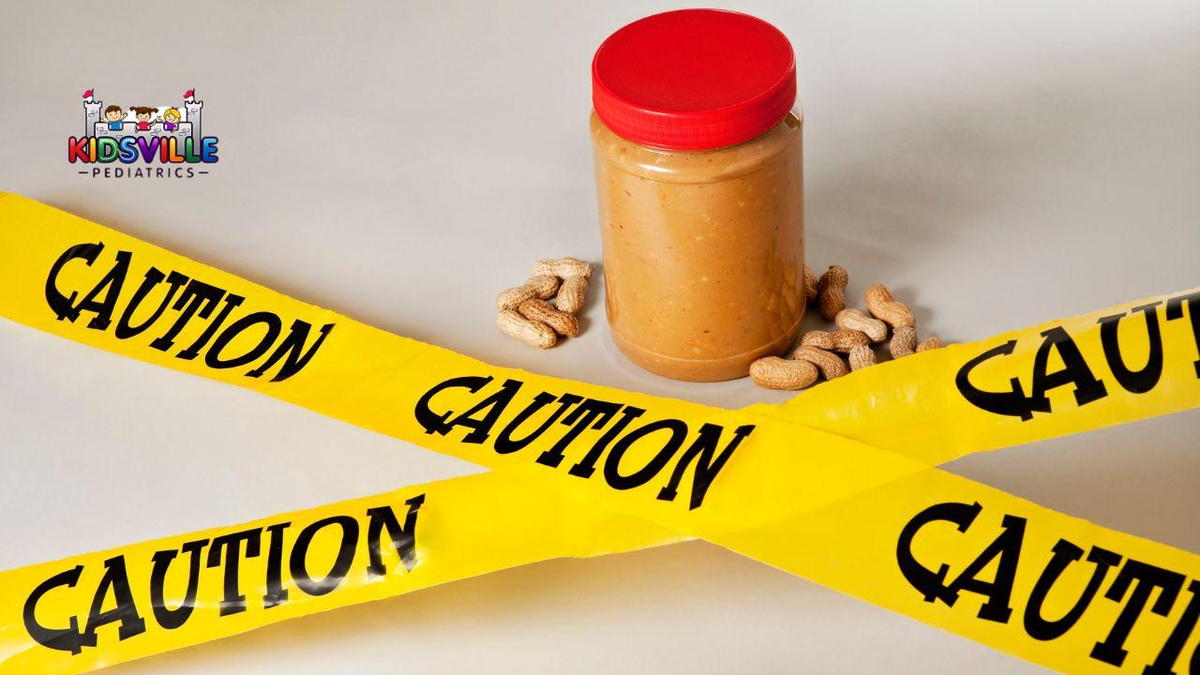
Even if you just see a mild reaction to peanuts, it's crucial to consult a healthcare professional to address your kid’s condition. This ensures you’re prepared for any potential future reactions.
Recognizing Peanut Allergy Symptoms
Peanut allergies can trigger a range of symptoms shortly after exposure. These include skin reactions like hives and redness, itching around the mouth and throat, digestive issues, and even difficulty breathing. In severe cases, symptoms escalate to anaphylaxis, a medical emergency requiring immediate treatment with an epinephrine auto-injector and emergency care. Anaphylaxis can cause airway constriction, swelling of the throat, and a severe drop in blood pressure, making swift action essential.
Managing and Preventing Reactions
Peanut allergy management involves careful avoidance of peanuts and related products. Peanuts can be hidden in various foods like candies and baked goods, so always check labels and inquire about ingredients when dining out. Products may also be contaminated with peanuts during manufacturing, so be cautious with labels stating “may contain peanuts” or similar warnings.
When cooking at home, substitute peanut ingredients with alternatives such as toasted oats or seeds. Highly refined peanut oil might be safe for some, but unrefined peanut oils should be avoided.
Exploring Treatment Options
For children with peanut allergies, oral immunotherapy is a newer treatment option that may offer additional protection. Palforzia, a peanut protein powder, gradually exposes your child to peanuts to reduce their risk of severe reactions. However, this treatment is not a cure, and ongoing avoidance of peanuts is necessary.
Prevention Strategies
The latest guidelines suggest introducing peanut-containing foods to infants at high risk for peanut allergy as early as 4-6 months. Consult with your pediatrician to determine the best approach for your child’s specific needs.
2. Milk
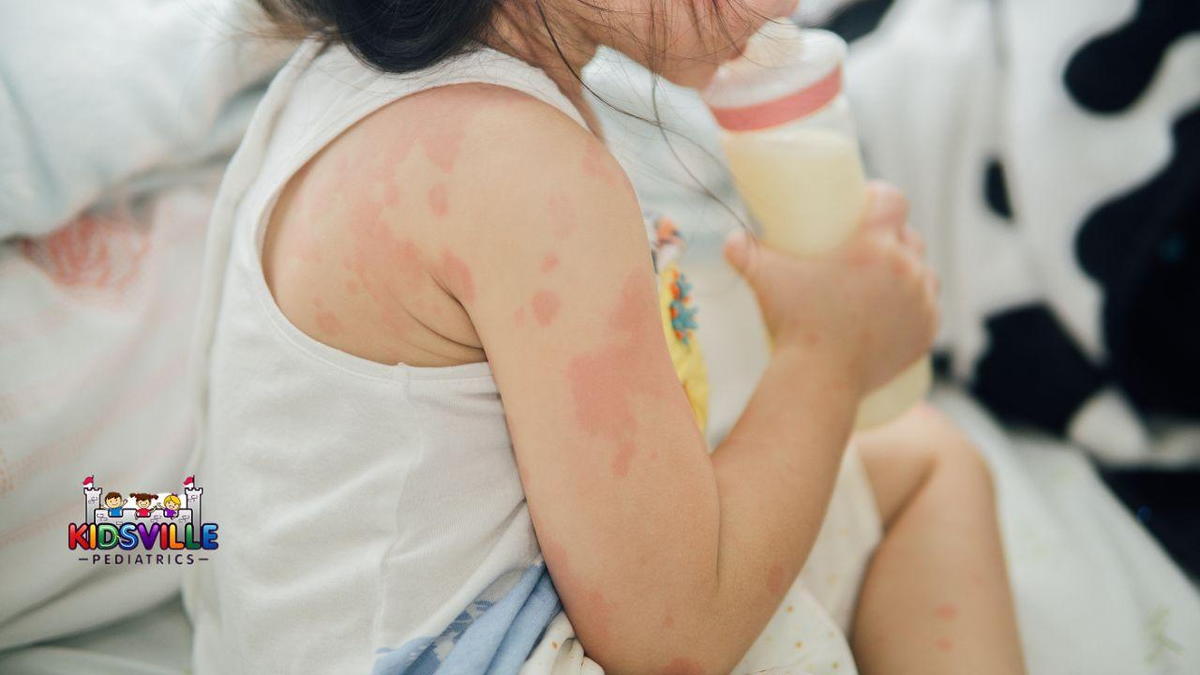
Yes - believe it or not - even milk can be an allergen. While cow’s milk is the primary cause, other animal milks, like goat’s and sheep’s milk, can also be problematic. Unlike milk protein intolerance or lactose intolerance, which have different causes and food allergy symptoms, a milk allergy involves a specific immune response that can be serious.
Who is Affected?
Milk allergies can impact anyone, but they are more frequent in children under 16. Many children eventually outgrow their milk allergies, and most infants with milk protein intolerance will see their symptoms resolve as they grow. Both formula-fed and breastfed babies can develop this allergy.
Prevalence and Symptoms
Around 2% of children in the U.S. have a milk allergy. Symptoms often appear within minutes of consuming milk and can range from mild to severe. Mild symptoms might include hives, nausea, abdominal pain, or itching. In severe cases, reactions such as anaphylaxis— a potentially life-threatening condition—can occur and require immediate medical attention.
How Does a Milk Allergy Affect the Body?
When your child has a milk allergy, their body produces immunoglobulin E (IgE) antibodies in response to milk proteins. These antibodies cause the release of histamine, leading to allergic symptoms. IgE reactions are fast-acting and can lead to severe outcomes like anaphylaxis. Non-IgE reactions, like milk protein intolerance, develop more slowly and are generally less severe.
Why Did My Child Develop a Milk Allergy?
The exact reason for developing a milk allergy isn't entirely clear, and it is not contagious. This means it cannot be spread to others.
Diagnosis and Tests
If you suspect your child has a milk allergy, consult with a healthcare provider or allergist. They might recommend:
Blood Test: Measures IgE antibody levels in response to milk proteins.
Skin Prick Test: Involves pricking the skin with milk proteins to observe for allergic reactions.
Graded Oral Challenge: Involves consuming increasing amounts of milk under medical supervision to confirm the allergy.
Management and Treatment
Avoiding milk and milk-containing products is crucial for managing a milk allergy. Always check food labels for milk and be mindful of cross-contamination. Your allergist may prescribe an epinephrine auto-injector (EpiPen®) for emergencies. Consult with a pediatrician McKinney TX professional to ensure your child gets necessary nutrients from other sources.
Living with a Milk Allergy
Managing a milk allergy requires careful attention and planning. Always review food labels, inform your child’s caregivers and teachers, and keep an epinephrine auto-injector handy. Regular visits to your pediatric healthcare McKinney expert can help you stay on top of your child’s condition and make any necessary adjustments.
3. Eggs
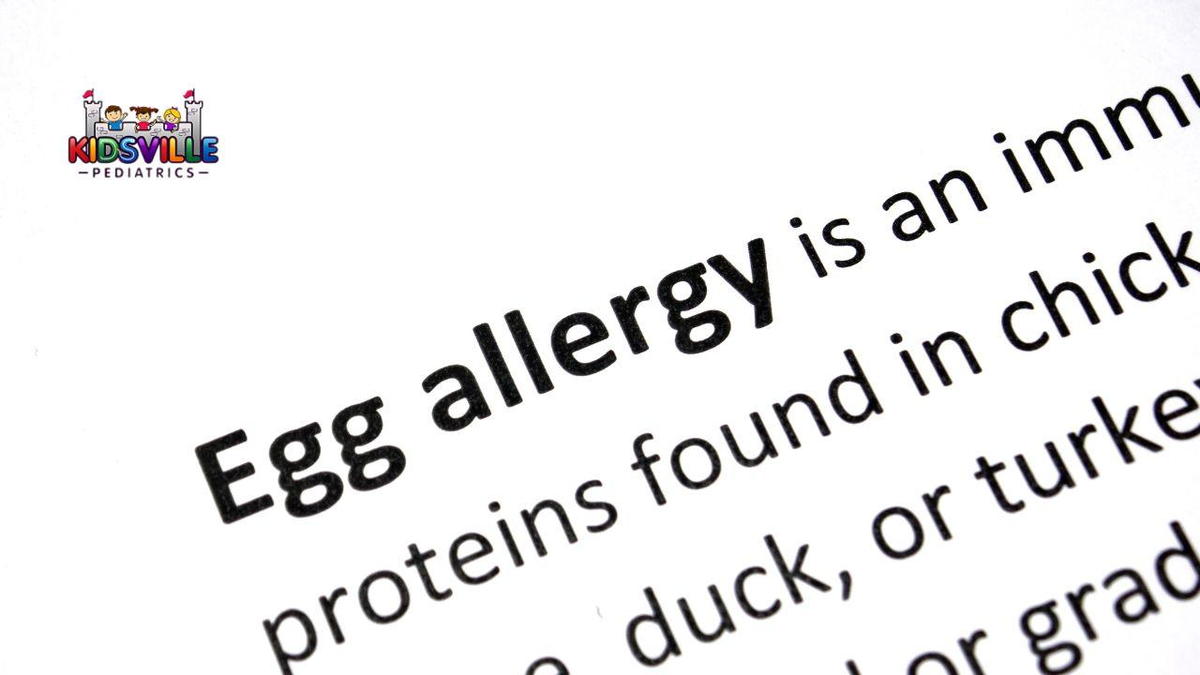
An egg allergy is a common concern among children, though many outgrow it before adolescence. Food allergy symptoms can vary from mild reactions, like skin rashes and a runny nose, to severe cases such as anaphylaxis. It's crucial to manage this allergy by avoiding all foods containing egg or egg products.
Symptoms of Egg Allergy
Symptoms of an egg allergy can appear within minutes to hours after consumption. Mild symptoms include:
Hives or rash
Itchy and watery eyes
Runny nose
Abdominal cramps, nausea, or vomiting
Severe reactions, such as anaphylaxis, can be life-threatening and include:
Difficulty breathing
Swelling of the tongue or throat
Persistent dizziness or collapse
Causes and Cross-Reactivity
Egg allergies are triggered by the immune system’s reaction to proteins in egg whites or yolks. Allergies to egg whites are more common. Additionally, some individuals may react to both chicken and duck eggs, a condition known as cross-reactivity. Consult with a pediatrician in McKinney for guidance on managing cross-reactivity.
Egg Allergies and Vaccines
Most vaccines do not contain egg proteins, but some, like the flu vaccine, are produced using eggs. It’s essential to discuss your child's egg allergy with a pediatrician in McKinney to ensure that vaccines are administered safely.
Diagnosing Egg Allergy
Diagnosing an egg allergy can be challenging. Keeping a symptom diary can help you and your healthcare provider understand potential triggers. Note when and where symptoms occur, and any related food or medication intake.
Managing Severe Reactions
If there are severe symptoms, like difficulty breathing or swelling, be sure to call emergency services right away. Administer an epinephrine auto-injector if available, and seek medical attention without delay.
For expert advice on managing egg allergies, consult with a pediatrician McKinney expert to ensure your child’s safety and well-being.
4. Tree Nuts (Walnuts, Almonds, Cashews, etc.)

When your child with a tree nut allergy consumes nuts, their body reacts as if these nuts are harmful. This reaction triggers an allergic response. Mild symptoms may include red, itchy patches of skin known as hives. Severe reactions, or anaphylaxis, can involve widespread hives, throat swelling, difficulty breathing, abdominal pain, nausea, vomiting, diarrhea, or even fainting. Anaphylaxis is life-threatening and requires immediate attention from McKinney pediatricians.
Preventing Allergic Reactions
Avoiding tree nuts is crucial in preventing allergic reactions. Tree nuts include almonds, pecans, cashews, walnuts, and others. Be aware that tree nuts can also be hidden in various foods such as salads, Asian dishes, baking mixes, and sauces. Flours made from tree nuts are common in vegan and gluten-free products.
Home Care for Mild Reactions
For mild reactions, administer a non-drowsy antihistamine like loratadine (Claritin) as recommended by your doctor. Always follow the medication instructions carefully.
Handling Severe Reactions
During a severe allergic reaction, use an epinephrine shot immediately. Older children should be trained to administer their own shot if needed. Always keep the epinephrine with your child and check its expiration date. Call emergency services right away, as severe allergic reactions are medical emergencies.
Preventing Future Reactions
To prevent future reactions, strictly avoid foods that cause problems. Avoid using utensils or cookware that may have come into contact with allergens. Educate your child’s teachers and caregivers about handling severe reactions and ensure your child wears medical alert jewelry listing their allergies.
When to Seek Emergency Help
If you suspect your child is having a severe allergic reaction, administer the epinephrine shot and call 911 immediately, even if symptoms improve. Emergency help is essential if your child exhibits symptoms like widespread hives, throat or tongue swelling, breathing difficulties, fainting, or severe gastrointestinal symptoms. Keep a close watch on your child's condition and contact McKinney pediatricians or an advice line if they don’t improve as expected.
5. Wheat
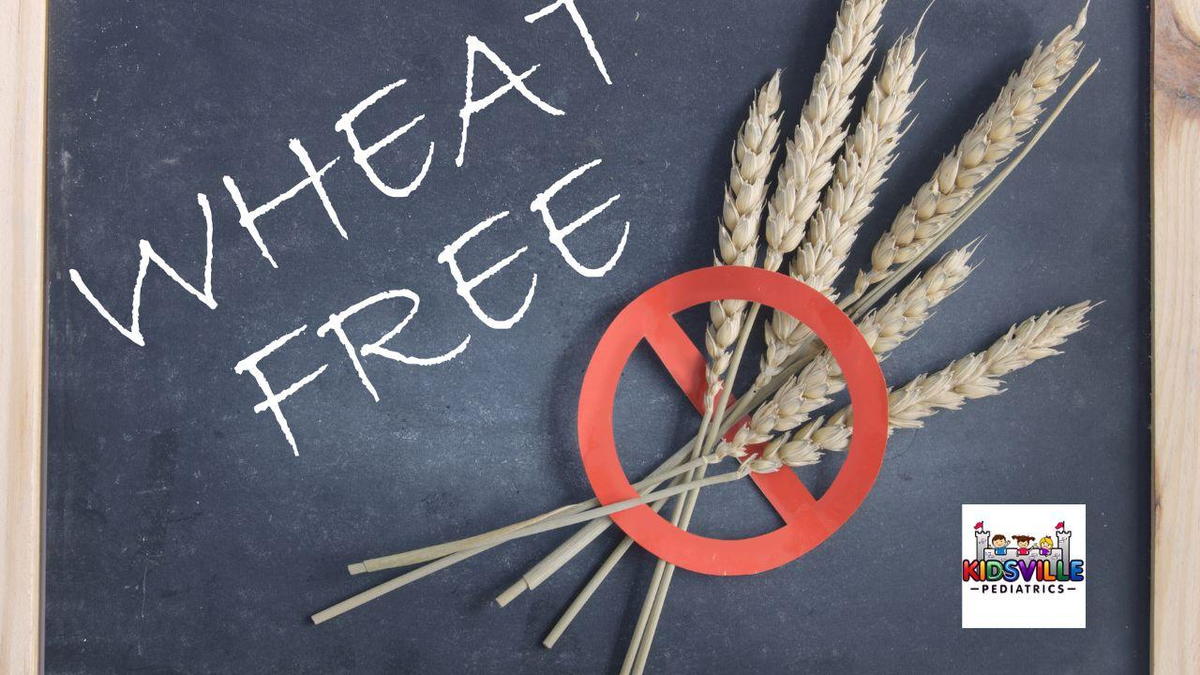
If your child has a wheat allergy, their body will react abnormally to wheat. This reaction can occur from eating foods containing wheat or, in some cases, even from inhaling tiny amounts of wheat flour. Symptoms typically show up within minutes to hours after exposure and can range from mild to severe.
Common Symptoms
Wheat allergies symptoms include:
Skin: Hives (red, itchy, and blotchy skin) and mild to severe swelling.
Lungs: Difficulty breathing, shortness of breath, coughing, or wheezing.
Eyes: Itching, tearing, or redness.
Throat: Tightness, trouble breathing, or swallowing.
Stomach: Nausea, vomiting, abdominal pain, cramping, and diarrhea.
Nose: Congestion, clear discharge, or itching.
Head: Headaches.
In severe cases, wheat exposure leads to anaphylaxis, which can lead to death when unaddressed. Symptoms of anaphylaxis include severe difficulty breathing, throat swelling, chest pain, dizziness, and skin color changes. If your child exhibits these symptoms, call 911 immediately.
Causes of Wheat Allergies
Wheat allergies occur when the body mistakenly identifies one of the four proteins in wheat as harmful. The immune system releases histamine in response, causing allergic symptoms. This reaction can affect various parts of the body, leading to the diverse symptoms described above.
Diagnosis and Testing
Diagnosing a wheat allergy can be challenging as its symptoms may resemble those of celiac disease or gluten sensitivity. McKinney pediatricians can help ensure your child receives an accurate diagnosis and appropriate treatment. Tests may include:
Skin Test: A small amount of wheat is introduced to the skin, and the site is observed for reactions.
Blood Test: Checks for antibodies produced in response to wheat.
Food Challenge: Involves consuming small amounts of wheat in a controlled setting to monitor for reactions.
6.Soy

Soy allergy means your kid’s immune system mistakenly treats soy proteins to be harmful.This reaction triggers the release of histamine, leading to various allergic symptoms. Here’s what you need to know about soy allergies, including signs, diagnosis, and treatment options.
Signs and Symptoms
Soy allergies can cause reactions in different parts of the body. Common symptoms include:
Hives
Difficulty breathing, shortness of breath, coughing, or wheezing.
Itching, tearing, or redness of eyes
Tightness, trouble breathing, or swallowing.
Vomiting, nausea, abdominal pain, cramping, or diarrhea.
Congestion, clear discharge, sneezing, or itching.
Dizziness or changes in behavior or mood.
Drop in Blood Pressure
Testing and Diagnosis
To diagnose a soy allergy, a pediatric allergist might recommend:
Skin test
Blood Test:
Food Challenge
Treatment and Management
Managing a soy allergy primarily involves avoiding soy-containing foods. Always read food labels carefully as soy can be present in many products, including sauces, baked goods, and even vegan dishes.
Treatment Options
Antihistamines: For mild reactions to alleviate food allergy symptoms
Epinephrine: For severe reactions or anaphylaxis
When to Seek Help
If your child shows signs of a severe allergic reaction or anaphylaxis, such as difficulty breathing, swelling in the throat, or a drop in blood pressure, use epinephrine and call 911 immediately.
Some children may eventually outgrow their soy allergy. Regular testing under the guidance of your pediatrician in McKinney can help determine if it’s safe to reintroduce soy into their diet.
7. Shellfish and Fish
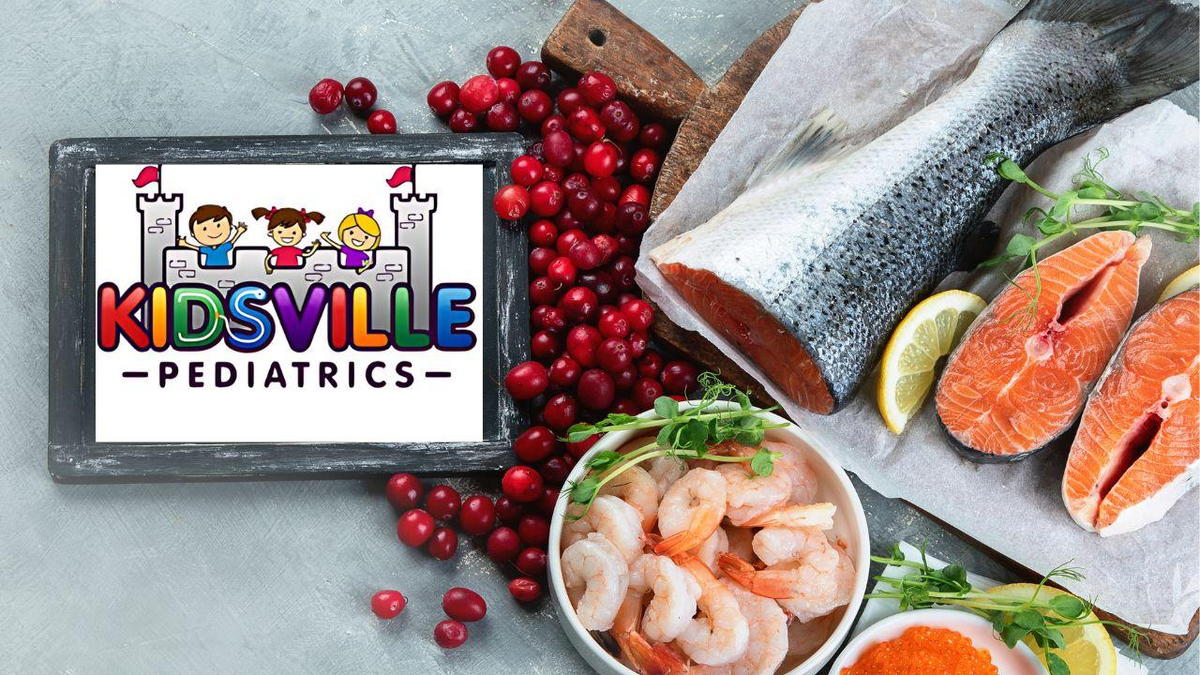
Fish allergies are distinct from seafood allergies, which can also include shellfish like shrimp and lobster. Although both fish and shellfish are categorized under "seafood," they are biologically different. A fish allergy specifically pertains to fish such as tuna or cod, and it doesn’t automatically mean your child will react to shellfish unless they have a separate shellfish allergy. Here’s what you need to know to keep your child safe and manage a fish allergy effectively.
What is a Fish Allergy?
A fish allergy occurs when your child’s immune system mistakenly identifies proteins in fish as harmful invaders. This triggers the release of histamine and other chemicals, leading to allergic reactions. These reactions can occur not only from eating fish but also from touching it or inhaling vapors from cooking.
Fish allergies can develop at any age, even in individuals who have previously consumed fish without issues. While some food allergies may be outgrown, fish allergies are often lifelong. It’s crucial for parents to understand and manage this allergy to ensure their child's safety.
Signs and Symptoms
Fish allergies - just like any other food allergies we have already discussed - can present with a range of symptoms that vary in severity:
Skin: Hives, red spots, swelling, and itching.
Lungs: Wheezing, trouble breathing, coughing, and hoarseness.
Throat: Tightness and difficulty swallowing.
Stomach: Belly pain, vomiting, and diarrhea.
Eyes: Itchy, watery, or swollen eyes.
Blood Pressure: A drop in blood pressure, causing lightheadedness or fainting.
Anaphylaxis can threaten multiple body systems. Administer epinephrine immediately and call 911 for emergency medical assistance.
Diagnosis and Testing
To confirm a fish allergy, consult with a pediatric allergist who may conduct various tests:
Skin Test: A small amount of fish protein is introduced to your child's skin via a pinprick. If a red bump forms, it indicates an allergy.
Blood Test: This measures specific antibodies in your child’s blood that respond to fish proteins.
Food Challenge: Under medical supervision, your child will consume increasing amounts of fish to monitor for reactions.
Treatment and Management
Managing a fish allergy means veering away from fish and fish products. Here’s how you can effectively handle your child's allergy:
Avoidance: Ensure that your child does not eat fish or foods that might contain fish ingredients. Always check food labels for "fish" or "contains fish."
Epinephrine: Keep two epinephrine auto-injectors on hand for severe reactions. Your doctor will show you how to use these devices, and older children can learn to administer them themselves.
Allergy Action Plan: Obtain an allergy action plan from your doctor. This plan will guide you on recognizing and treating allergic reactions. Share this plan with caregivers, school staff, and anyone involved in your child’s daily activities.
Note: Epinephrine is crucial for treating severe reactions. Over-the-counter antihistamines can help with mild symptoms but should not replace epinephrine in emergency situations.
Preventing Cross-Contamination
Cross-contamination is a risk when dining out or preparing food. Fish particles can contaminate other foods through shared cooking surfaces, utensils, or oils. Here’s what to consider:
Restaurants: Avoid seafood restaurants where cross-contamination is likely. Inform the restaurant staff about your child's fish allergy to ensure they take precautions.
Food Labels: Read all food labels carefully. Look for advisory statements such as "may contain fish" or "processed in a facility that also processes fish."
What to Do in Case of an Allergic Reaction
If your child shows symptoms of a severe allergic reaction, use the epinephrine auto-injector immediately and call 911. Even if symptoms seem to improve, seek medical attention, as severe reactions can have a second wave of symptoms.
Long-Term Outlook
Many children with fish allergies will continue to have this allergy into adulthood. Regular testing and follow-up with your pediatrician at Kidsville Pediatrics can help monitor your child’s condition and adapt their management plan as needed.
By staying informed and prepared, you can effectively manage your child’s fish allergy and ensure their safety. If you have any concerns or need further guidance, don’t hesitate to reach out to the pediatric specialists at Kidsville Pediatrics for support and advice.
You may schedule an appointment online: https://www.kidsvillepeds.com/appointment/ Or visit/call our clinics: Kidsville Pediatrics Mansfield TX: 682-341-3910; 1759 Broad Park Circle S, Suite 201 & 205, Mansfield, TX Kidsville Pediatrics Southlake: 682-345-8010; 2813 W. Southlake Blvd Suite 100 Southlake, TX Kidsville Pediatrics McKinney: 469-885-9400; 5881 Virginia Pkwy. Suite 300 Mckinney, TX |
